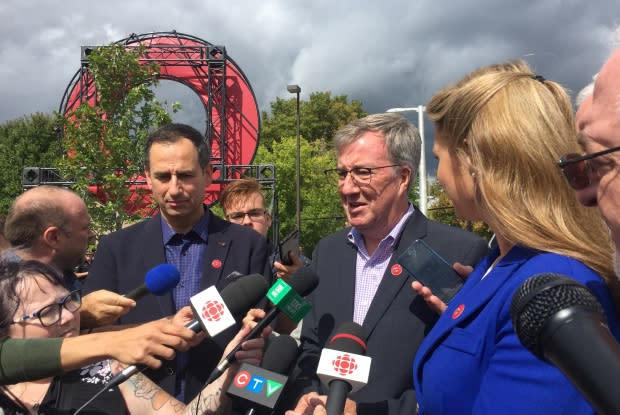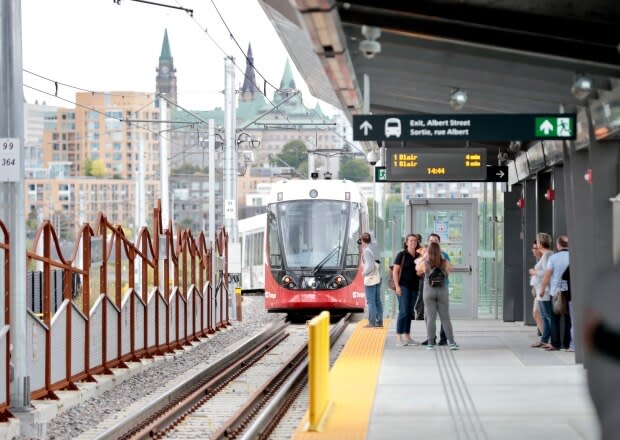'Is this Ottawa?' Confederation Line launches capital into big-city status

It's not every day that people are happy to line up for public transit, but then again, Saturday wasn't just any day.
It was a day more than six years in the making. A day that was pushed forward not once, not twice, but on five separate occasions. A day that so many have looked forward to with anticipation and, perhaps, a little trepidation.
It was the day the Confederation Line opened. And it was the day that finally put to rest any lingering doubts about whether Ottawa is a big city.
Politicians are apt to overuse the term "historic," but for Ottawa's $2.1-billion LRT network, it's an understatement.
It's the most expensive infrastructure project in the city's history, one that promises to ease congestion, take hundreds of diesel buses off the road and put the city on the path to a more modern commuter system.
Saturday about celebration
After more than six years — the last one taken up with multiple delays — a giant sinkhole on Rideau Street, reports of trouble with winter storms, and a recent radio failure that shut down the LRT for 10 hours, residents certainly have reason to be wary.
And we must continue to hold the city accountable for a system that's supposed to see trains arrive every few minutes during rush hour, work during winter storms, carry 10,700 passengers every hour and be generally reliable.
But that's not what Saturday was about.
The launch of the Confederation Line was a celebration of a pivotal point in Ottawa's growth as a city. It won't be painless for everyone — some people's commutes will in fact now be longer — but with the second phase of LRT already underway, this weekend could be the start of a massive transformation in the way we get around the capital.

"Wow, I feel very proud to be a resident of Ottawa and very excited to be on the first inaugural ride," Mayor Jim Watson told CBC as he rode the Confederation Line with almost 500 guests and members of the media after a morning ceremony.
"It's been a dream for a long time for a lot of people, myself included, so [I'm] really ecstatic."
And most people agreed with him.
Quick familiarity
The majority of people riding the rails on Saturday afternoon appeared to be transit tourists, both locals and a few out-of-towners who couldn't wait to try our new train system. Hundreds lined up at 2 p.m. outside Tunney's Pasture to be the first paying customers.
The early reviews were generally positive: "Awesome!" was a common response, with a healthy smattering of "It's about time!" thrown in.
The trains are bright, while the 12.5-kilometre ride from Tunney's Pasture to Blair stations takes less than 25 minutes. The public art is striking, and the elevators and washrooms (built at four stations) are large and accessible.
There are also plenty of OC Transpo folks helping people navigate the new system, although it's not clear how long we'll need them.
For all that the light rail system is transformational — it feels so un-Ottawa, at first — it's amazing how quickly transit users have started taking it in stride. People, of course, are familiar with taking commuter trains in other cities, so it stands to reason they'd get used to the Confederation Line in no time.
But that quick familiarity also surely has to do with the intuitiveness of the system, to the credit of the city and its partners.

Monday will be the test
This is not to say there weren't some issues.
Some escalators, including the one at Rideau station — the longest transit escalator in Canada — experienced some temporary blips. And when rush hour service begins Monday morning, when people actually need to use the system to get someplace efficiently, there will undoubtedly be more challenges.
Tunney's Pasture alone will see 110 buses arrive every hour, dropping off thousands of passengers who will then have to transfer to the new LRT system. It could very well be chaos.
But when your city is undergoing transformational change, a little chaos is to be expected.



